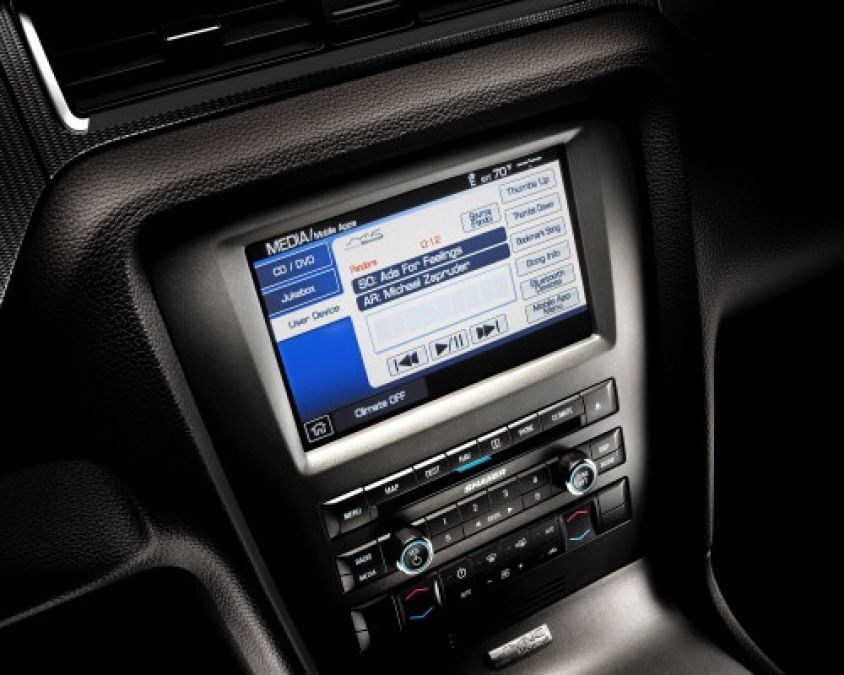Think natural, conversational commands and coaching with your Ford SYNC system as fiber within Ford’s four pillars: Driver quality, Driver green, Driver safe and Driver smart.
Ford Motor Company (NYSE: F) no doubt wants more than anything for its SYNC popularity to continue to spread worldwide. Nuance Communications (Nasdaq: NUAN) is thus helping to make that possible by enabling the system with new algorithms to allow understanding and intent, so drivers can converse more easily with their car.
Aside from the launch of SYNC in 2007, it was January, 2010, when Nuance and Ford first unveiled significant enhancements to the speech capabilities powering the next-generation of Ford SYNC™. Now it supports commands in US English, US Spanish, Canadian French, Brazilian Portuguese, German, European French, UK English, Italian, European Spanish, European Portuguese, Dutch and Mandarin Chinese.
Fact is, the extended relationship has allowed Ford to tap into Nuance’s professional services team for porting, application development, speech UI design and implementation, tuning, testing and ultimately integration, enabling continued speech innovation.
Good news is, consumer acceptance and usage of voice control surely continues to increase, with more than 85 percent of SYNC owners now using voice control while driving, up 70 percent in previous internal research.
So, it stands to reason that Ford and Nuance are testing a number of new algorithms, based on intent and meaning, for the voice recognition system as Ford Sync® is powered by Nuance voice solutions.
These new techniques can flag common words and phrases that drivers might typically use in conversation, yet are not the specific commands or syntax required by today
SYNC system. By interpreting or understanding the user’s request, SYNC will be able to execute the command or respond by coaching the user down the correct command pathway.
“With each generation of SYNC, we have learned more about how drivers use the voice recognition system, and have continuously refined it so customers can do more and say more to get their tasks done more quickly and efficiently, said Brigitte Richardson, Ford Global Voice Control technology and Speech Systems lead engineer. “With intent, we are examining how t take our voice recognition to the next level of command and control, helping further reduce the learning curve and improving ease of use - and ultimately building higher customer satisfaction. In the end, we want the user’s wish to be the system’s command.”
Understanding Intent
According to the media release, the true power of understanding intent comes into play if a user is unfamiliar with the exact commands for a SYNC feature or doesn’t give enough information to complete a command.
Here is an example: If a user says, “I wanna call John Smith,” the request could still be interpreted accurately for the official SYNC command, “Call John Smith.”
In similar fashion, a command such as, “I want to change the temp,” would invoke the algorithms to aid the system in guiding the driver to provide more information about whether they want to make it warmer or colder inside the cabin, and what temperature they would prefer.
Working closely with Ford’s speech team, Nuance has created several language models for the core SYNC voice-activated functions and services, including phone, music, climate, navigation and traffic.
“Nuance is continuously evolving its voice technology to provide drivers with a more natural and conversational interface,” said Vlad Sejnoha, chief technical officer, Nuance. “By combining our advanced voice recognition capabilities with intent and language understanding, we’re not only able to hear what drivers are saying, but better understand what they are looking to accomplish - be it listen to songs by Train or change the temperature to 75 degrees.”
On a Stock Note
Nuance (Nasdaq: NUAN) had a low of $6.18 in late 2008 during the market sell-off, but has traded recently as high as $22.93. The March low of $16.79 looks to be a point of strong price support.
Ford Motor company (NYSE: F), on the other hand, has fallen this month to a low of $12.65, with support at the monthly low of $9.75 from May of 2010. It had traded to a high of $18.97 in January of 2011.
Full Disclosure: At time of publication, Sherosky, creator of the auto sector charts for TN, is neither long or short with the mentioned stocks, though positions can change at any time. None of the information in this article constitutes a recommendation, but an opinion.
-----------------------
About the Reporter: After 39 years in the auto industry as a design engineer, Frank Sherosky now trades stocks, futures and writes articles, books and ebooks like, "Perfecting Corporate Character," "Awaken Your Speculator Mind", and "Millennial World Order" via authorfrank.com. He may be contacted here by email: [email protected]
________________________________________________
Additional Reading:
Ford Motor Company (NYSE: F) stock still sliding lower
Ford among top honors for 2011 Edison Best New Product Award
Toyota Motor Company stock price action is robust within market sell-off
GM stock breaks to new low, the 6th in past 11 days
Toyota requests dismissal of shareholder suits over unintended acceleration






Comments
The question is will it
Permalink
The question is will it understand today's slang or even Ebonics? Yes, this is being taught in our schools, so, hopefully auto voice technology can understand it as well.